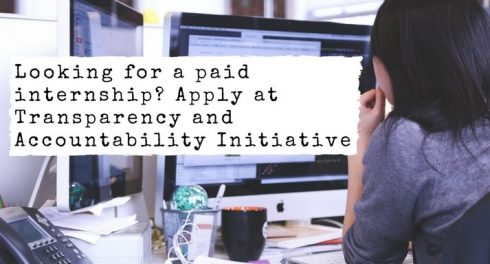Editorial appeared on Private Foundations’ Giving for Development in 2013-2015: Ongoing efforts to better reflect private philanthropic giving in OECD-DAC statistics on development finance

Photo: Miguel Á. Padriñán at Pexels
The trend toward greater transparency of philanthropic funding is to be welcomed. Over 50 organizations in the United Kingdom publish to the open data 360Giving standard, over 90 foundations publish to Glass Pockets in the United States, and now this OECD survey brings together data from 143 foundations worldwide.
As funders of transparency efforts for good governance around the globe, the members of the Transparency and Accountability Initiative (TAI) – a donor collaborative of the Ford Foundation, Omidyar Network, Open Society Foundations, and the William and Flora Hewlett Foundation together with MacArthur Foundation and the Department for International Development of the United Kingdom – recognize the importance of being open about funding commitments. We expect government donors to be transparent on the use of public resources, and therefore also on the aid they provide, fostering accountability to the beneficiaries and to their home country tax payers. Although the accountability relationship is different for private donors, we believe that philanthropic funders also benefit from being open about grants made.
The benefits of greater data on philanthropic funding run deeper than satisfying public relations considerations. For one, we believe it important for building trust with grantees and beneficiaries, and assuring comfort with the role of philanthropy within society more broadly. As funders supporting international transparency, it is important for TAI members to “walk the talk,” but we believe the credibility that transparency provides is beneficial to the philanthropic sector writ large. Of course, funders do need to be sensitive to individual privacy concerns and to protecting data that might create vulnerabilities for recipients in sensitive political contexts – a growing concern amid the proliferation of laws restricting civil society organizations in many countries, including legislation specifically limiting receipt of foreign funding.
As more funders publish information on grant making, it should lead to more effective future funding commitments. The data pool is useful for current and prospective grantees, but also a valuable resource for funders themselves. They can better benchmark their portfolios. By providing a bigger and more granular picture of where funds are flowing, publicly available grants data can help minimize duplication of efforts, and identify geographic and thematic gaps in funding. As more foundations make information available, the greater the utility – especially when combined with available information on official aid. Standard reporting templates such as OECD-DAC Creditor Reporting System and the International Aid Transparency Initiative can ease cross comparison. As Dan Sutch of Nominet has noted, ‘an individual grantmaking organization might not alone make a huge difference in sharing their grants data, but when they are combined across multiple grantmaking organizations, then we might generate some real insight.’
In a 2013 Institute for Philanthropy survey, donors reported that the greatest benefit of sharing more information about their giving was that it “facilitates collaboration.” As a donor collaborative we have certainly found that to be true amongst our members. Indeed, the utility of grant data rises not just when combined with that of other funders, but when complemented by publication of contextual information. For example, grant makers can more proactively share their strategies as well as evaluations and evidence reviews. This helps to inform shared understanding not just of what gets funded, but why, and how funders adapt based on evidence of what is working or not.
Extending transparency on these fronts should further boost effectiveness of funding and stories of impact that may attract more funding for positive social change. It could become standard practice for new philanthropies. In that case, the OECD efforts to better capture private philanthropy worldwide– either through a next ad hoc survey or regular reporting to the OECD – could become a powerful tool for assuring donor transparency and accountability.

The full report is available on the OECD website
References:
3GOgiving (2014), Foundation transparency: why it matters — article by Fran Perrin Alliance Magazine March 2014, http://www.threesixtygiving.org/2014/03/17/foundation-transparency-why-it-matters-article-by-fran-perrin-alliance-magazine-march-2014/
3609iving (2018), Official website, http://www.threesixtygiving.org/(accessed 26 February 2018).
Glass Pockets (2018), Official website, glasspockets.org (accessed 26 February 2018).
IATl (2018), Official website, https://www.aidtransparency.net/(accessed 26 February 2018).
OECD (2018), Creditor Reporting System, https://stats.oecd.org/Index.aspx?DataSetCode=CRS1(accessed 26 February 2018).
Rutzen, Douglas (2017), Threats to Civil Society Around the World, pp. 1.
The Philanthropy Workshop (2013), Towards Greater Transparency in Philanthropy, http://www.tpw.org/news/entry/towards_greater_transparency_in_philanthropy_full.
Transparency and Accountability Initiative (2018), Official website, http://www.transparency-initiative.org(accessed 26 February 2018).


